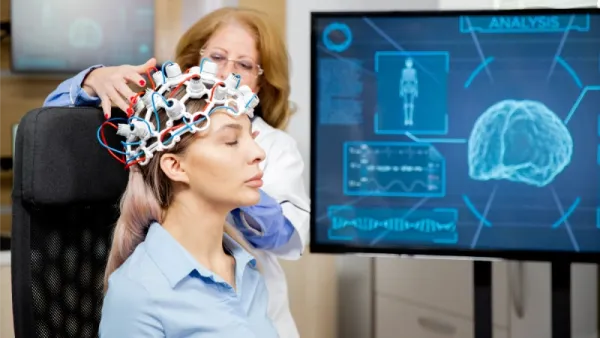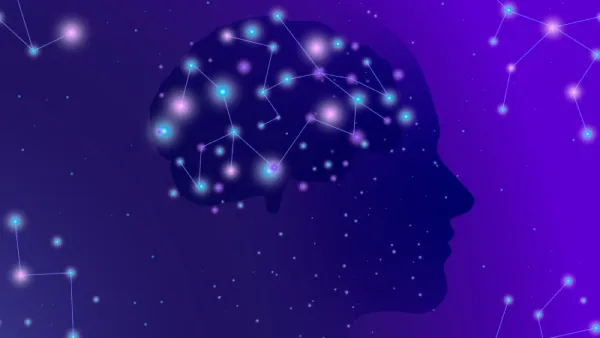
Artificial Intelligence (AI) is transforming healthcare at an unprecedented rate, including mental healthcare. From AI-driven chatbots and predictive analytics using social media data to advanced diagnostic systems, AI is rapidly entering an emotionally complex and ethically sensitive domain. However, as AI sparks hope for early intervention and scalability, it also raises concerns about bias, privacy, transparency, and the potential erosion of human connection.
AI can identify early indicators of mental illness by analyzing speech, social media activity, language patterns, and physiological cues. One study achieved accuracy comparable to that of standard clinical tools, such as the PHQ-9, by using Facebook data to predict psychiatric disorders up to 18 months in advance. Virtual assistants and wearables with AI capabilities may provide constant monitoring, enabling proactive measures to be taken before emergencies arise.

AI can identify minor signals that doctors might overlook thanks to large datasets that combine neuroimaging, genetics, behavior, and EHRs. By determining the therapy that holds the most significant promise for a specific patient, these systems can also facilitate individualized treatment planning.
Startups like Limbic in the UK use AI-powered “e‑triage” to screen hundreds of thousands for depression, anxiety, and PTSD, achieving 93% accuracy. Chatbots, such as Woebot, Wysa, and Earkick, offer support between sessions or for individuals facing access barriers.
AI models can integrate clinical, behavioral, and social data to identify individuals at heightened risk of self-harm, potentially enabling earlier intervention.

The quality of training data determines the effectiveness of AI systems. AI may misdiagnose or miss important indicators if data underrepresents particular groups, such as Black Americans, non-native English speakers, or rural populations. Due to language and cultural variations, AI was less successful in one study in identifying depression in Black users.
One of the most sensitive types of data is information to mental health. Large-scale access to private journals, therapy sessions, biometrics, or social media activity is frequently necessary for AI technologies. This presents privacy issues, particularly when misuse or data leaks result in stigma, discrimination in insurance, or adverse effects on one’s ability to find work. Strict consent, encryption, anonymization, and robust regulations, such as GDPR or HIPAA, are essential for maintaining public trust.
Many AI models, profound learning systems, generate diagnoses without explainable reasoning. Patients and clinicians may not always understand how an outcome was reached. In healthcare, this opacity undermines trust and complicates accountability when something goes wrong.

Clinical empathy, nuance, nonverbal cues, and therapeutic alliance are essential to effective mental health treatment. AI–chatbots often fail in complex emotional scenarios—such as suicidal ideation or psychosis—sometimes responding with inappropriate or harmful prompts. While some AI systems offer 24/7 support, their inability to engage in deep human understanding risks alienation.
If AI misdiagnoses or recommends ineffective treatment, who is at fault? Developers? Clinicians? Institutions? Clear legal frameworks and professional guidelines are still evolving.
Woebot, Wysa, and Earkick: Offer CBT-style check-ins and support, commended for their ease of use and accessibility. Professionals used fictitious adolescent profiles to investigate Replika, Nomi, and Serena; they frequently failed to manage self-harming content responsibly and occasionally promoted behaviors that were potentially dangerous.
Research from Stanford revealed that about 20% of the time, LLM-based therapy bots provided inappropriate or dangerous replies, sometimes even encouraging self-harm.

Use datasets that represent gender, race, language, age, and socioeconomic groups. Regular bias audits using tools like AI Fairness 360 help mitigate systemic inequities. Implement strong encryption, anonymization, and transparent data-use policies to ensure the protection of sensitive information. Patients should opt in knowingly, with easy access to revoke consent. Integrate explainable AI (XAI) methods (e.g., SHAP, LIME) to allow clinicians and patients to understand the basis of AI outputs.
AI can never replace clinicians. Hybrid approaches, where AI flags concerns or suggests actions for clinician review, preserve empathy and accountability. Governments and medical boards must establish standards for AI-vetted mental health tools, covering safety, efficacy, auditing, liability, and patient rights.
AI has enormous potential for improving mental health care by identifying early warning indicators, reducing the need for clinicians, expanding access, and facilitating individualized treatment. However, if left unchecked, it can lead to bias, privacy violations, opacity, a decline in human rapport, and accountability holes. A balanced integration—where AI serves as a helper, not a replacement—is essential for success. This entails utilizing inclusive data, protecting privacy, ensuring transparency, preserving human connections, and implementing strict controls. Instead of replacing empathy, AI in mental health should strengthen it. We can harness AI’s power to enhance our mental health systems effectively if we prioritize ethics alongside innovation.